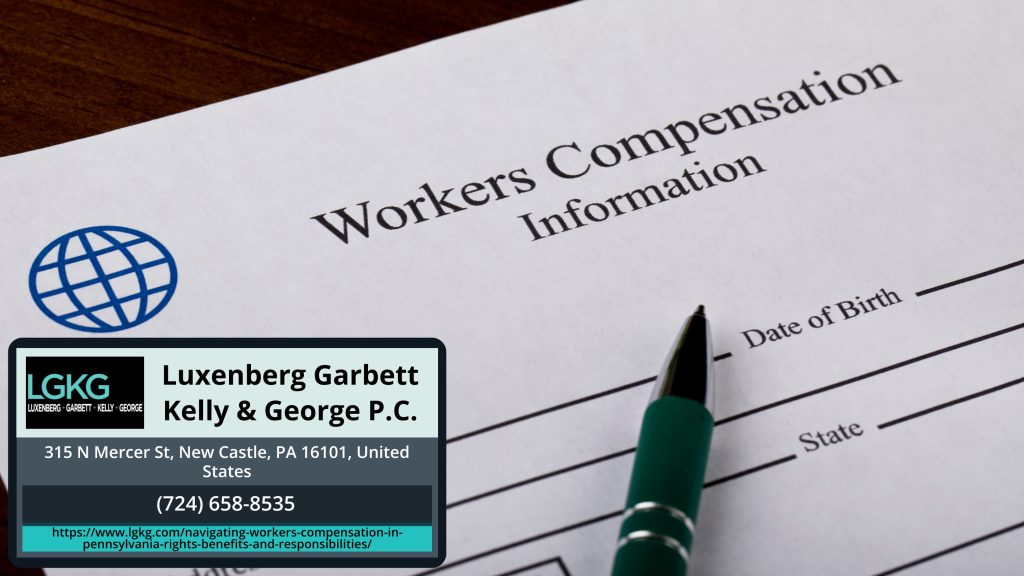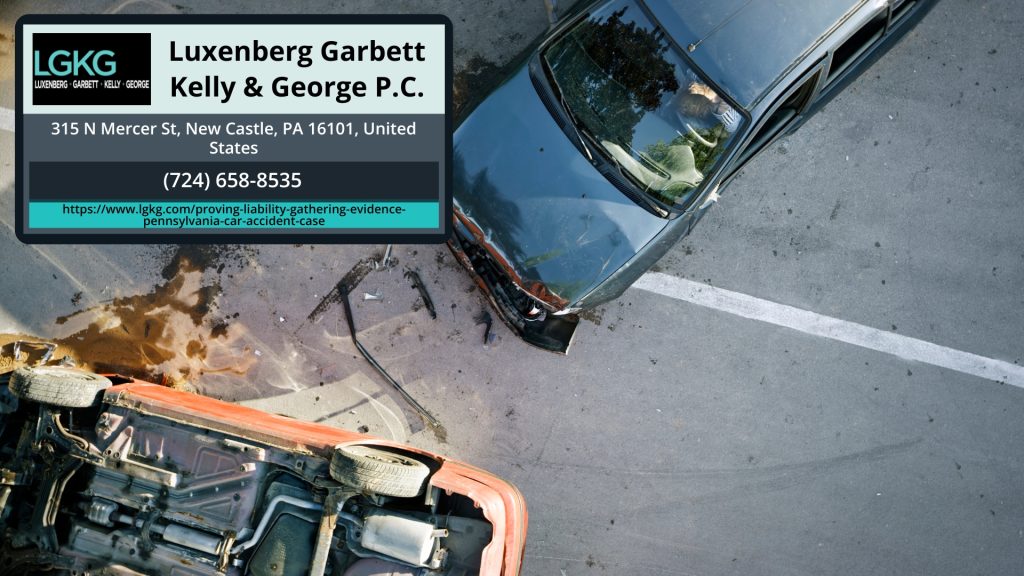Workers’ compensation in Pennsylvania serves as a crucial safety net for employees who suffer work-related injuries or illnesses. This system helps cover medical expenses and lost wages, allowing injured workers to recover without the added burden of financial strain. It also provides a structured process for employers to handle workplace injuries while maintaining legal protections. Understanding the workers’ compensation process in Pennsylvania is essential for both employees and employers, as it affects workplace rights, responsibilities, and financial security.
Workers’ Compensation benefits can include coverage for medical expenses, wage loss compensation, vocational rehabilitation, and specific loss benefits for permanent injuries. However, navigating the claims process can be challenging, especially if an employer or insurance company disputes a claim. A knowledgeable Western Pennsylvania workers’ compensation lawyer can guide you through the claims process, protect your rights, and help you pursue the full benefits available under the law. If you need assistance with your claim, Luxenberg Garbett Kelly & George P.C. may be able to assist you. Contact us today at (724) 658-8535 for a free consultation and get the legal guidance you need to navigate your workers’ compensation case with confidence.
What is Workers’ Compensation?
Workers’ compensation is a form of insurance that provides wage replacement and medical benefits to employees who are injured or become ill as a result of their jobs. This includes injuries sustained in workplace accidents, occupational diseases, and repetitive stress injuries. In Pennsylvania, most employers are required by law to carry workers’ compensation insurance to protect their employees in the event of a workplace injury or illness.
Rights and Responsibilities of Employees
Workers who are injured on the job in Pennsylvania have specific rights and responsibilities when it comes to filing for workers’ compensation benefits:
- Report the Injury: Employees must report any work-related injury or illness to their employer as soon as possible. Failure to report the injury promptly could jeopardize the employee’s ability to receive benefits.
- Seek Medical Treatment: Employees have the right to seek medical treatment for their work-related injury or illness. In Pennsylvania, employers have the right to designate a list of healthcare providers that injured workers must see for treatment.
- File a Claim: If an employee is unable to work due to a work-related injury or illness, they have the right to file a workers’ compensation claim with the Pennsylvania Bureau of Workers’ Compensation. This claim must be filed within the statute of limitations, which is typically within 120 days of the injury or the date the injury was discovered.
- Receive Benefits: If a workers’ compensation claim is approved, injured employees are entitled to receive wage replacement benefits, medical expenses coverage, and, in some cases, vocational rehabilitation services.
- Return to Work: Injured employees may be required to undergo medical evaluations and participate in vocational rehabilitation programs to facilitate their return to work. Employers are also required to provide reasonable accommodations for employees with work-related disabilities.
| Step | Description |
|---|---|
| Report the Injury | Notify your employer immediately about any work-related injury or illness. |
| Seek Medical Treatment | Obtain necessary medical care from an employer-designated healthcare provider. |
| File a Claim | Submit a workers’ compensation claim with the Pennsylvania Bureau of Workers’ Compensation within the statutory deadline. |
| Receive Benefits | Once the claim is approved, receive wage replacement, medical expense coverage, and potentially vocational rehabilitation services. |
| Return to Work | Undergo required medical evaluations and participate in rehabilitation or vocational programs, with accommodations as needed. |
Responsibilities of Employers
Employers in Pennsylvania also have specific responsibilities under the workers’ compensation system:
- Provide Insurance: Employers are required to carry workers’ compensation insurance to cover their employees in case of a workplace injury or illness.
- Report Injuries: Employers must report any work-related injuries or illnesses to their workers’ compensation insurance carrier and the Pennsylvania Bureau of Workers’ Compensation within a specified timeframe.
- Provide Medical Treatment: Employers are responsible for providing injured employees with access to medical treatment for their work-related injuries or illnesses.
- Accommodate Injured Workers: Employers must make reasonable accommodations for injured employees to facilitate their return to work, including modified duties or job reassignments if necessary.

Exceptions and Limitations in Workers’ Compensation Claims
Pennsylvania workers’ compensation covers most work-related injuries and illnesses. This includes sudden accidents like broken bones, back injuries, and burns, as well as repetitive stress injuries such as carpal tunnel syndrome or tendonitis caused by routine job activities. Work-related illnesses are also covered, including chemical exposure illnesses, respiratory conditions, and skin disorders caused by hazardous materials. Occupational diseases specifically recognized under Pennsylvania law include asbestos-related illnesses, hearing loss due to prolonged noise exposure, and lung diseases linked to workplace contaminants.
However, it’s crucial to understand while workers’ compensation provides coverage for most work-related injuries and illnesses, there are specific exceptions and limitations that may affect an employee’s eligibility for benefits.
Exceptions to Coverage
- Self-Inflicted Injuries: Injuries that an employee intentionally causes themselves are not covered.
- Injuries Due to Legal Violations: Injuries resulting from an employee’s violation of the law, including illegal drug use, may not be covered.
- Intoxication: Injuries or deaths caused by intoxication may not be covered.
- Non-Work-Related Injuries: Injuries that happen outside of work duties or during personal activities unrelated to employment are generally not covered.
- Certain Employment Categories: Specific groups may be exempt from mandatory coverage under the Pennsylvania Workers’ Compensation Act, including:
- Federal Employees: Covered under federal workers’ compensation laws.
- Railroad Workers: Also covered under federal statutes.
- Agricultural Workers: Those who work fewer than 30 days or earn less than $1,200 in a calendar year from one employer may be exempt.
- Domestic Servants: Coverage is optional for employers.
- Executive Officers: Certain executive officers of corporations may elect an exemption from the Act.
Limitations to Claims
- Statute of Limitations: Employees must file a workers’ compensation claim within three years from the date of injury. Failure to do so can result in the forfeiture of benefits.
- Notice Requirement: Injured workers are required to report their injury to their employer within 120 days of its occurrence. Delayed reporting can lead to denial of the claim.
- Pre-Existing Conditions: While aggravation of pre-existing conditions due to work activities may be compensable, establishing the work-related exacerbation can be challenging and may limit benefits.
- Mental Health Claims: Psychological injuries, such as stress or post-traumatic stress disorder (PTSD), are generally compensable only if they are linked to a specific work-related incident.
- ‘Coming and Going’ Rule: Injuries sustained while commuting to and from the workplace are typically not covered unless the employee was performing a work-related task during the commute.
- Violation of Workplace Safety Rules: If an employee is injured while violating company safety policies or engaging in horseplay, their claim may be denied or benefits reduced.
Exclusive Remedy Provision
Under Pennsylvania law, workers’ compensation is generally the exclusive remedy for employees injured on the job, meaning they cannot sue their employers for additional damages related to the injury. However, exceptions exist, such as cases involving intentional harm by the employer or situations where the employer lacks required workers’ compensation insurance.
This legal framework is designed to provide a straightforward and efficient means of support for injured workers, while also protecting employers from potential lawsuits. Understanding these boundaries can help both employees and employers manage expectations and responsibilities regarding workplace safety and compensation.
Navigating the Workers’ Compensation System
Navigating the workers’ compensation system in Pennsylvania can be overwhelming, with numerous regulations and requirements to consider. For employees, understanding their rights and responsibilities is essential for ensuring they receive the benefits they are entitled to. Likewise, employers must fulfill their obligations under the law to protect their employees and maintain compliance with workers’ compensation regulations.
Seeking guidance from a Western Pennsylvania workers’ compensation lawyer can help employees and employers address challenges in the claims process and understand their rights and responsibilities. Workers’ compensation laws provide important protections, but disputes and denials may arise, making legal support crucial for securing benefits. Following proper procedures and addressing claims fairly allows the system to function as intended, ensuring injured workers receive the assistance they need. If you need legal assistance with a claim, Luxenberg Garbett Kelly & George P.C. may be able to help. Call (724) 658-8535 today for a consultation.
from LGKG https://www.lgkg.com/navigating-workers-compensation-in-pennsylvania-rights-benefits-and-responsibilities/





